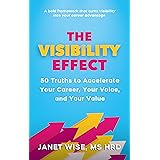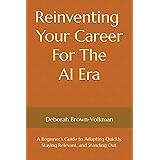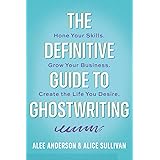Many job seekers encounter significant frustration when their meticulously crafted resumes consistently fail to generate interview invitations. This common issue often stems from an approach that misunderstands the core mechanics of modern recruitment, particularly the role of Applicant Tracking Systems (ATS) and the rapid review processes employed by recruiters. The video above offers essential insights from a recruiter’s perspective, highlighting crucial adjustments for a more effective job application strategy. This comprehensive guide expands upon those foundational resume writing tips, providing the expert-level detail necessary to transform your resume into a powerful tool for career advancement.
Recruiters typically spend mere seconds reviewing each resume, a fact validated by studies showing an average of 6-7 seconds per resume before an initial decision is made. Therefore, your resume must be exceptionally clear, concise, and strategically aligned with the target role. Shifting from a generic summary to a tailored profile is paramount for capturing attention and demonstrating immediate relevance. This document will delve into actionable strategies for optimizing your resume, ensuring it passes ATS scrutiny and compels hiring managers to schedule that pivotal first interview.
1. Abandon Outdated Resume Templates for ATS Compliance
A prevalent mistake many professionals make involves utilizing visually appealing, graphic-heavy resume templates downloaded from platforms like Canva.com or large industry hubs. These designs, often created by graphic designers without an understanding of recruitment technology, are frequently incompatible with Applicant Tracking Systems. ATS platforms struggle to parse complex layouts, multiple columns, custom fonts, and embedded graphics, often resulting in critical information being misinterpreted or entirely omitted. Statistics indicate that approximately 75% of resumes are initially screened by an ATS, emphasizing the critical need for compliance.
For optimal ATS performance, a minimalist, single-column layout is universally recommended. Opt for standard, clean fonts such as Calibri, Arial, or Georgia, which are easily readable across various systems and devices. Resist the temptation to incorporate bright colors or intricate graphics, as these elements distract from your professional qualifications and can impede automated parsing. A battle-tested, recruiter-approved resume template typically prioritizes content clarity and functional design over superfluous aesthetic embellishments. The only exception might be for roles in highly creative fields, where your resume itself serves as a portfolio piece, though even then, a custom design often outperforms generic templates.
Optimize Contact Information for Seamless ATS Parsing
One specific formatting error that often trips up ATS is horizontally arranged contact information. While this might seem like a minor detail, ATS systems are designed to extract data linearly and prefer contact details presented vertically. When your name, phone number, email, and LinkedIn profile are spread across a single line, the system may struggle to correctly identify and categorize each piece of information into its designated field. This can lead to incomplete applications within the ATS, potentially slowing down your application process or requiring manual data entry which introduces friction.
Ensure your contact information is neatly stacked in a vertical block, usually at the top of your resume. This simple structural adjustment significantly enhances ATS readability, allowing for clean data transfer into recruiter databases. Regularly test your resume’s ATS compatibility by applying to a job and reviewing how your information is parsed, adjusting any elements that require manual correction. An ATS-friendly contact section streamlines the application process, reflecting professionalism and attention to detail from a technical standpoint.
2. Transition from Summarizing to Strategic Professional Profiling
Many job seekers err by crafting resumes that merely summarize every accomplishment throughout their career, irrespective of the target role’s relevance. This unfocused approach often buries pertinent achievements beneath a mass of irrelevant details, forcing recruiters to sift through unnecessary information. Instead, adopt a strategy of professional profiling, which involves tailoring your resume to highlight the specific skills, experiences, and accomplishments most critical to the advertised position. This targeted method ensures that you deliver precisely what the employer seeks, directly addressing their stated needs.
Profiling involves meticulously analyzing the job description to identify key responsibilities, required skills, and desired qualifications. Subsequently, you should curate your experiences to align with these specific criteria, using the job posting’s language where appropriate. This strategic alignment is a far more effective approach than presenting a generic career overview, significantly increasing the likelihood of your resume resonating with both ATS algorithms and human reviewers. Companies employing this profiling technique in their hiring often see a substantial improvement in candidate quality and interview conversion rates.
Leveraging Customization for a Competitive Edge in the Job Market
In today’s highly competitive job market, especially for coveted remote roles where applicant numbers can be astronomically high (e.g., a “Data Analyst” posting attracting over 13,770 applicants as observed recently), resume customization is no longer optional; it is absolutely imperative. Many job seekers resist customization due to perceived time constraints, but this reluctance creates a unique opportunity for those willing to invest the effort. Customized resumes stand out because they explicitly demonstrate a candidate’s understanding of the role and the company’s needs.
Developing a master resume that contains all your professional history and accomplishments can streamline the customization process. From this comprehensive document, you can selectively extract and refine content to match each specific job description, adjusting keywords, rephrasing bullet points, and prioritizing relevant experiences. This iterative approach to customization is your competitive advantage, ensuring your application directly addresses employer requirements and substantially improves your chances of securing an interview amidst a sea of generic submissions.
3. Prioritize Conciseness and Clarity Over Excessive Wordiness
Lengthy, dense blocks of text on a resume are a significant deterrent for recruiters and hiring managers who must review numerous applications quickly. Just as online readers skim through forum posts rather than reading extensive paragraphs, recruiters will often skip over resumes that present information in an overwhelming, wordy format. Your resume’s primary purpose is to convey a clear, concise fit for the job, compelling the reader to learn more during an interview, not to provide an exhaustive autobiography.
To enhance readability and impact, every word on your resume must serve a strategic purpose. Employ strong action verbs, quantify your achievements with data whenever possible, and eliminate unnecessary filler words or phrases. For instance, instead of saying “Responsible for managing a team of five people,” opt for “Managed a team of five, increasing project delivery efficiency by 15%.” This concise, results-oriented language ensures your contributions are immediately apparent and memorable. A well-formatted, scannable resume demonstrates respect for the recruiter’s time and facilitates quicker identification of your key qualifications.
Eliminate Proprietary Language and Generic Fluff
Job seekers frequently fall into the trap of using internal, proprietary language, project names, or division titles that are only understood within their current or former organizations. While these terms might be impressive internally, they create a barrier to understanding for external recruiters and hiring managers. This “word salad” approach often leaves external evaluators confused, making it difficult for them to assess your true capabilities in a universally recognized industry context. Strive to translate all proprietary jargon into common industry-standard terminology.
Furthermore, avoid generic, fluffy terminology such as “team player,” “great organizational skills,” or “highly motivated individual.” These statements are clichés that provide no tangible evidence of your abilities and often make recruiters “roll their eyes.” Instead, demonstrate these qualities through actionable examples and quantifiable achievements. For instance, rather than claiming to be a “team player,” describe a project where your collaboration led to a specific positive outcome. Focus on actionable terms and measurable impacts to convey your competencies effectively, ensuring your resume speaks directly to the job requirements.
4. Embrace Adaptability and Continuous Resume Optimization
If your current resume is not yielding the desired results – specifically, if you are consistently being rejected at the application stage despite feeling qualified – it is a clear indicator that your strategy needs a fundamental overhaul. Stubbornly adhering to a non-performing resume is counterproductive, echoing the adage about doing the same thing repeatedly and expecting different outcomes. The modern job market is dynamic, demanding an agile approach to job applications and continuous resume optimization.
Adopting a “plan, do, check, and adjust” methodology for your job search is crucial. After each application cycle, evaluate the effectiveness of your resume. If it’s not generating interviews, analyze what might be falling short and make substantial changes. This includes experimenting with different versions, refining your professional profiling based on feedback or further job description analysis, and continually integrating the latest best practices for ATS compliance and recruiter engagement. By remaining adaptable and committed to refining your resume, you significantly increase your chances of securing those critical job interviews.









